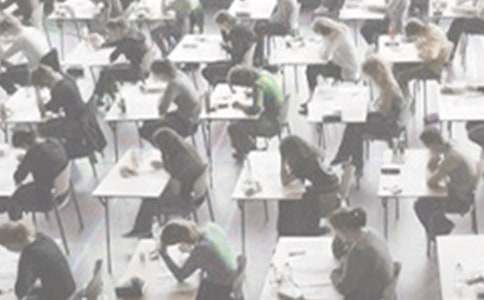2017年英語四級考試閱讀模擬考試題及答案
趕腳的對頭是腳懶,學(xué)習(xí)的對頭是自滿。以下是小編為大家搜索整理的2017年英語四級考試閱讀模擬考試題及答案,希望能給大家?guī)韼椭?更多精彩內(nèi)容請及時關(guān)注我們應(yīng)屆畢業(yè)生考試網(wǎng)!

Women’s Positions in the 17th Century
Social circumstances in Early Modern England mostly served to repress women’s voices. Patriarchal culture and institutions constructed them as chaste, silent, obedient, and subordinate. At the beginning of the 17th century, the ideology of patriarchy, political absolutism, and gender hierarchy were reaffirmed powerfully by King James in The Trew Law of Free Monarchie and the Basilikon Doron; by that ideology the absolute power of God the supreme patriarch was seen to be imaged in the absolute monarch of the state and in the husband and father of a family. Accordingly, a woman’s subjection, first to her father and then to her husband, imaged the subjection of English people to their monarch, and of all Christians to God. Also, the period saw an outpouring of repressive or overtly misogynist sermons, tracts, and plays, detailing women’s physical and mental defects, spiritual evils, rebelliousness, shrewish ness, and natural inferiority to men.
Yet some social and cultural conditions served to empower women. During the Elizabethan era (1558—1603) the culture was dominated by a powerful Queen, who provided an impressive female example though she left scant cultural space for other women. Elizabethan women writers began to produce original texts but were occupied chiefly with translation. In the 17th century, however, various circumstances enabled women to write original texts in some numbers. For one thing, some counterweight to patriarchy was provided by female communities—mothers and daughters, extended kinship networks, close female friends, the separate court of Queen Anne (King James’ consort) and her often oppositional masques and political activities. For another, most of these women had a reasonably good education (modern languages, history, literature, religion, music, occasionally Latin) and some apparently found in romances and histories more expansive terms for imagining women’s lives. Also, representation of vigorous and rebellious female characters in literature and especially on the stage no doubt helped to undermine any monolithic social construct of women’s mature and role.
Most important, perhaps, was the radical potential inherent in the Protestant insistence on every Christian’s immediate relationship with God and primary responsibility to follow his or her individual conscience. There is plenty of support in St Paul’s epistles and elsewhere in the Bible for patriarchy and a wife’s subjection to her husband, but some texts (notably Galatians 3:28) inscribe a very different politics, promoting women’s spiritual equality: “There is neither Jew nor Greek, there is neither bond nor free, there is neither male nor female: for ye are all one in Jesus Christ.” Such texts encouraged some women to claim the support of God the supreme patriarch against the various earthly patriarchs who claimed to stand toward them in his stead.
There is also the gap or slippage between ideology and common experience. English women throughout the 17th century exercised a good deal of accrual power: as managers of estates in their husbands’ absences at court or on military and diplomatic missions; as members of guilds; as wives and mothers who apex during the English Civil War and Interregnum (1640-60) as the execution of the King and the attendant disruption of social hierarchies led many women to seize new roles—as preachers, as prophetesses, as deputies for exiled royalist husbands, as writers of religious and political tracts.
1. What is the best title for this passage?
[A]. Women’s Position in the 17th Century.
[B]. Women’s Subjection to Patriarchy.
[C]. Social Circumstances in the 17th Century.
[D]. Women’s objection in the 17th Century.
2. What did the Queen Elizabeth do for the women in culture?
[A]. She set an impressive female example to follow.
[B]. She dominated the culture.
[C]. She did little.
[D]. She allowed women to translate something.
3. Which of the following is Not mention as a reason to enable women to originaltexts?
[A].Female communities provided some counterweight to patriarchy.
[B]. Queen Anne’s political activities.
[C]. Most women had a good education.
[D]. Queen Elizabeth’s political activities.
4. What did the religion so for the women?
[A]. It did nothing.
[B]. It too asked women to be obedient except some texts.
[C]. It supported women.
【英語四級考試閱讀模擬考試題及答案】相關(guān)文章:
大學(xué)英語四級閱讀考試題模擬練習(xí)附答案10-12
英語四級閱讀模擬考試題及答案201707-25
大學(xué)英語四級閱讀模擬考試題及答案201710-28
英語四級考試閱讀模擬試題及答案11-14
2017四級英語閱讀理解考試題及答案08-21
英語四級閱讀理解考試題及答案07-03
英語四級閱讀考試題精選附答案解析10-18